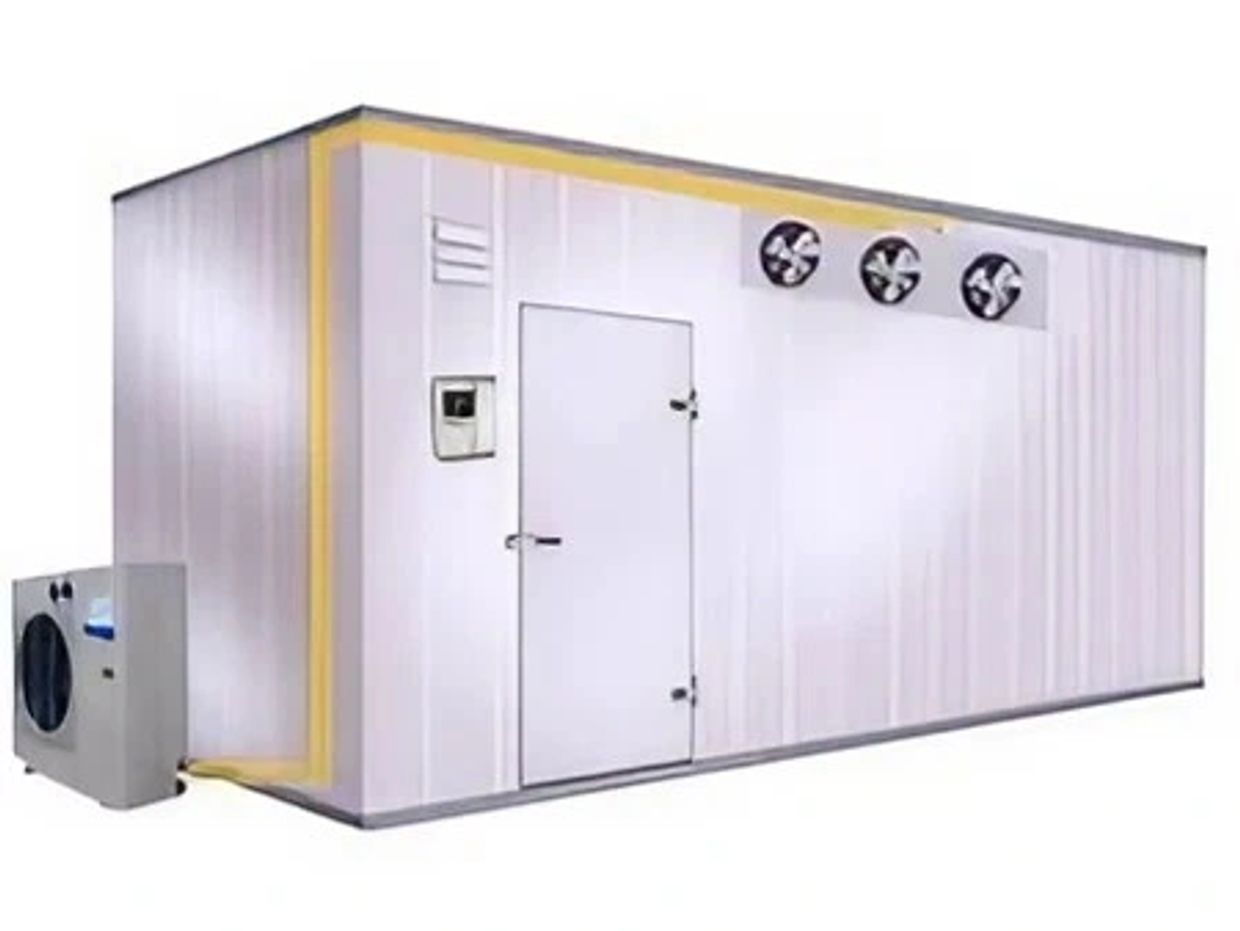Walk-In-Cold Chamber

Specifications
- Temperature Range: The temperature range can vary depending on the intended use of the chamber. It might be specified in degrees Celsius or Fahrenheit, with ranges typically from around -40°C to +10°C (-40°F to +50°F).
- Dimensions: Walk-in cold chambers come in various sizes to accommodate different needs. Common dimensions include height, width, and depth, with standard sizes ranging from small rooms to larger warehouse-style chambers.
- Insulation Thickness: The thickness of insulation in the walls, ceiling, and floor is an important spec for maintaining the desired temperature inside the chamber. Typical insulation thicknesses range from 4 inches to 8 inches or more, depending on the required level of thermal efficiency.
- Cooling Capacity: The cooling capacity of the refrigeration system is measured in BTUs (British Thermal Units) per hour or in kilowatts (kW). This spec indicates the ability of the system to remove heat from the chamber to maintain the desired temperature.
- Humidity Range: If the chamber includes humidity control features, the humidity range may be specified. This could be a percentage range of relative humidity, such as 30% to 90%.
- Door Type: The type of door on the chamber can vary, with options including hinged doors, sliding doors, or roll-up doors. The door size and material (e.g., insulated metal) may also be specified.
- Refrigeration System Type: The refrigeration system may use various technologies such as compressor-based systems, glycol systems, or cascade systems. The type of refrigerant used and any environmental certifications (e.g., EPA-compliant) may also be included in the specs.
- Power Requirements: The electrical power requirements for operating the cold chamber, including voltage, phase, and frequency. This spec ensures compatibility with the facility’s electrical infrastructure.
- Safety Features: Specifications may also list safety features such as emergency alarms, backup power systems, or pressure relief valves to ensure safe operation of the chamber.
Features
- Insulated Walls: The walls of the cold chamber are typically heavily insulated to prevent heat transfer from the outside environment and maintain a consistent cold temperature inside.
- Temperature Control: These chambers have temperature control systems that allow users to set and maintain specific temperature levels according to their requirements. Temperatures can range from just above freezing to well below zero degrees Celsius (-18°C, for example).
- Humidity Control: Some cold chambers also feature humidity control systems to regulate moisture levels within the chamber. This is especially important for certain applications like food storage or testing where humidity levels need to be carefully controlled.
- Large Entry Door: The entry door is typically large enough to allow for easy access and may feature seals or gaskets to minimize heat exchange when opening and closing.
- Interior Lighting: Lighting fixtures are installed inside the chamber to ensure visibility for users when working or accessing items stored within.
- Customization Options: Cold chambers can often be customized to suit specific needs, including size, temperature range, and additional features based on the intended application.
